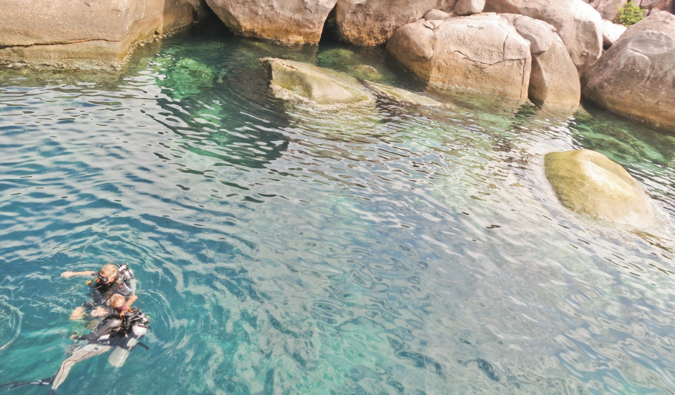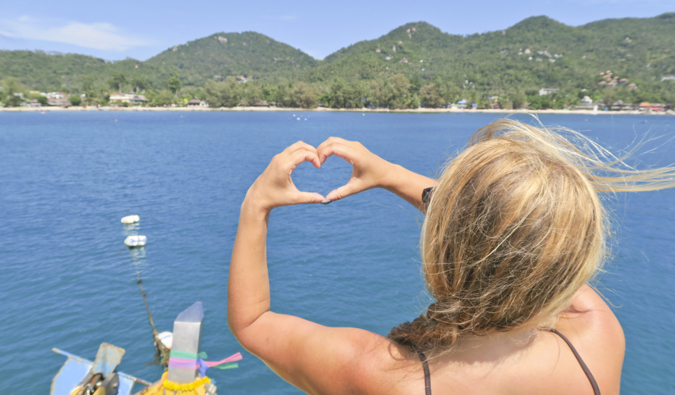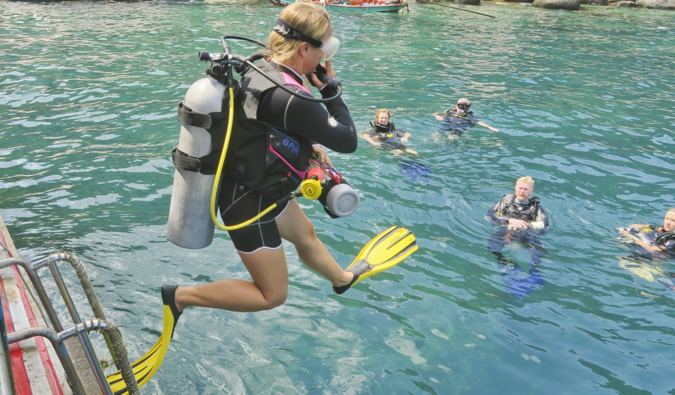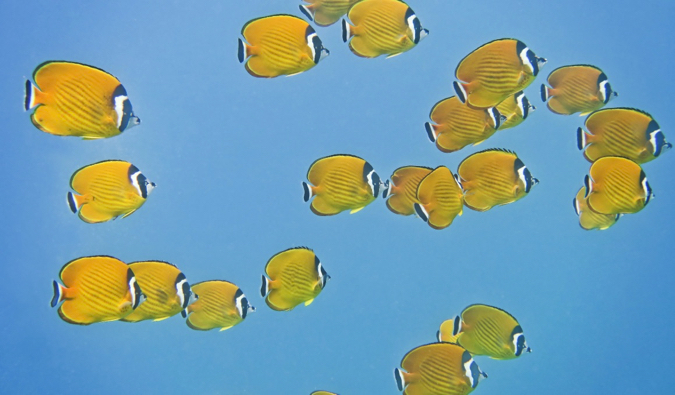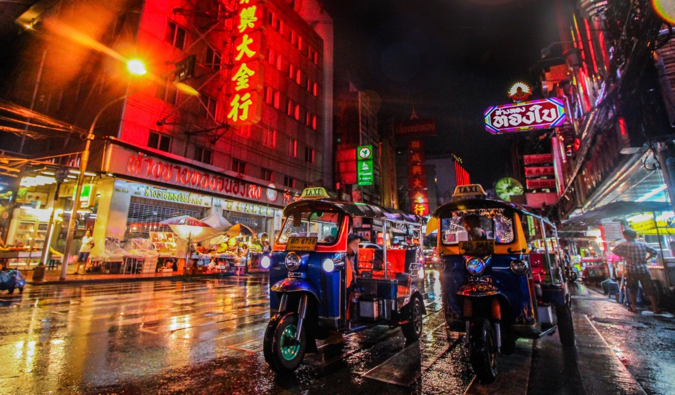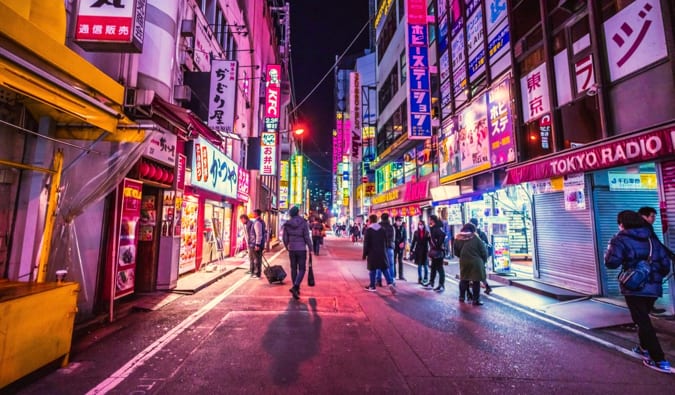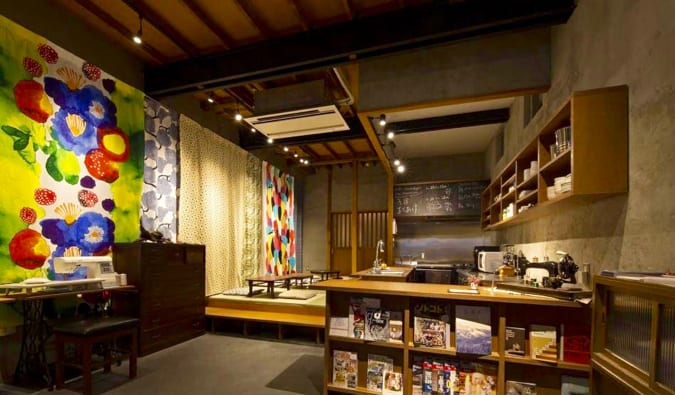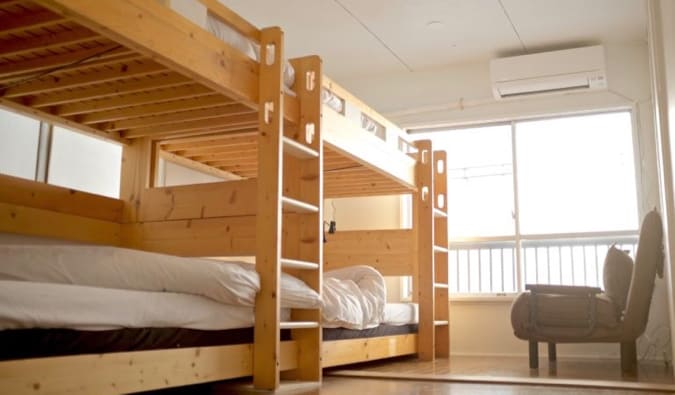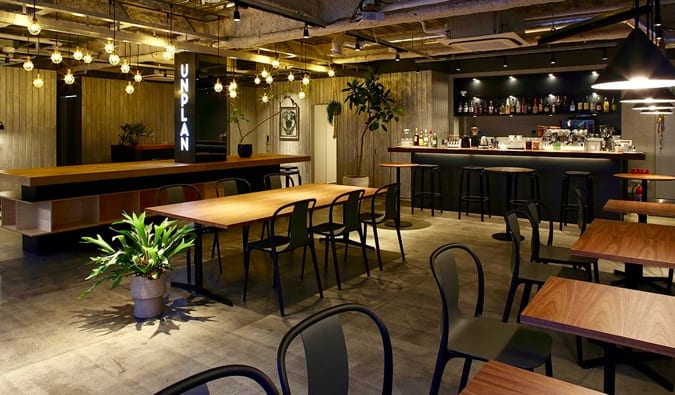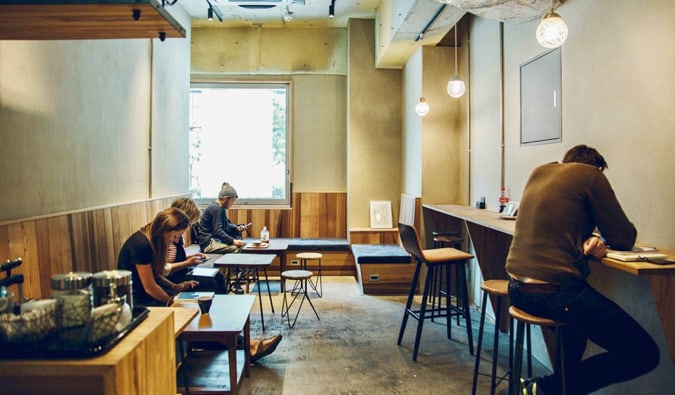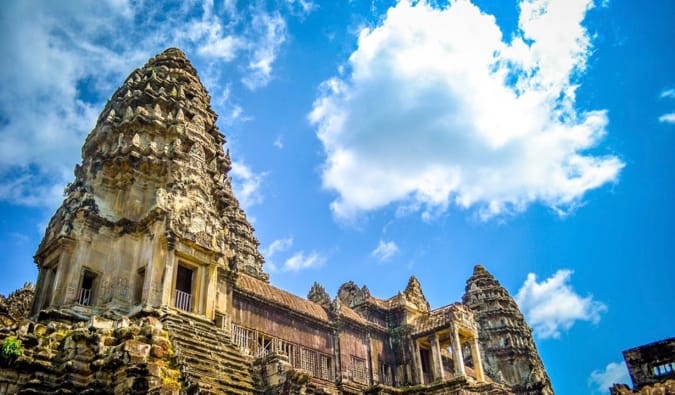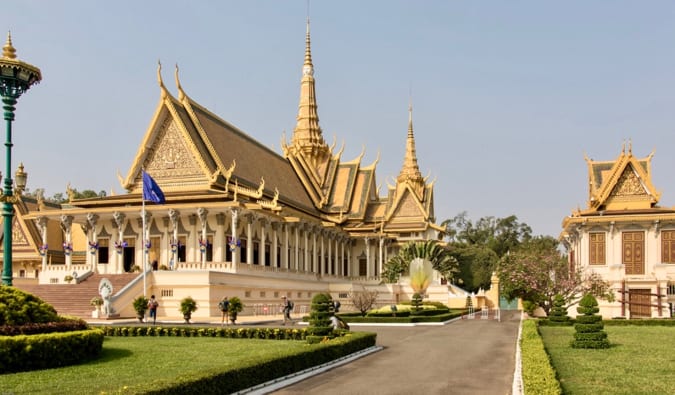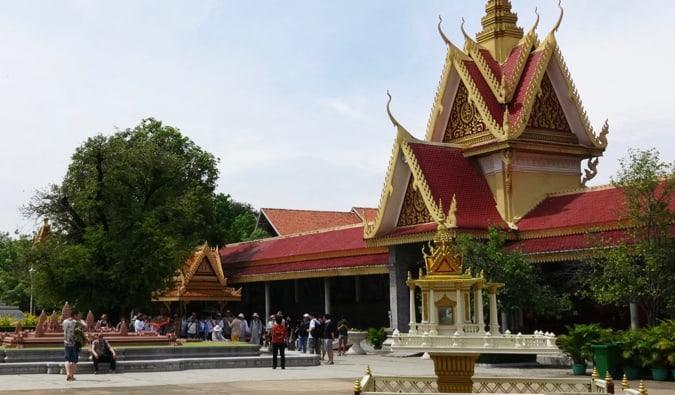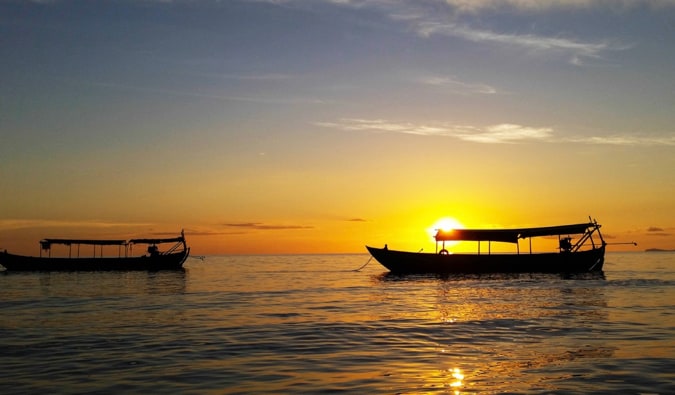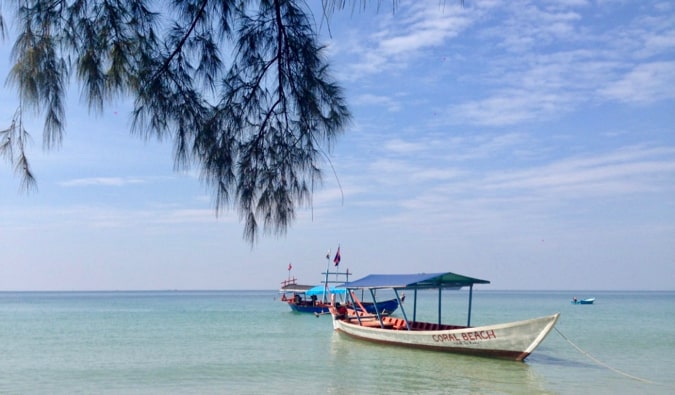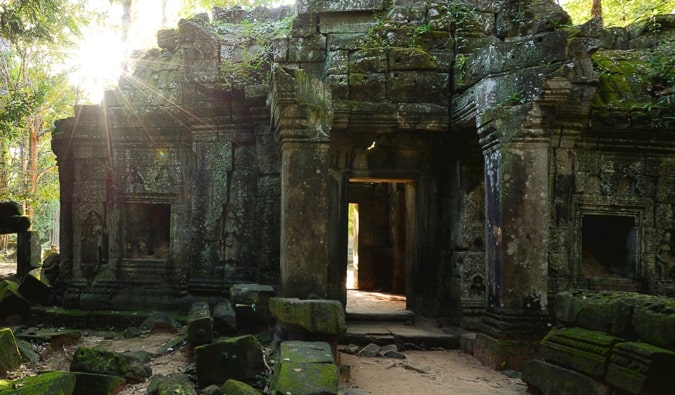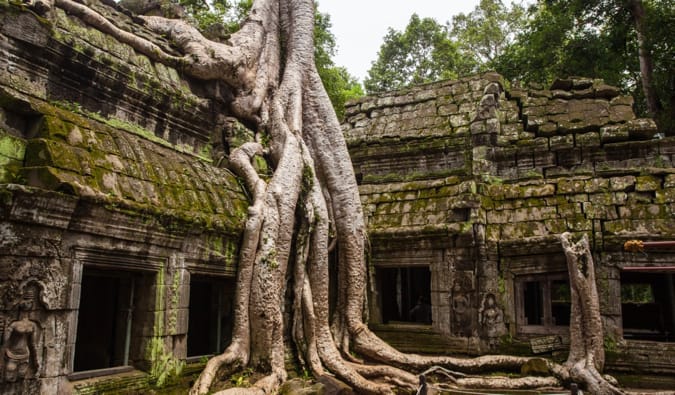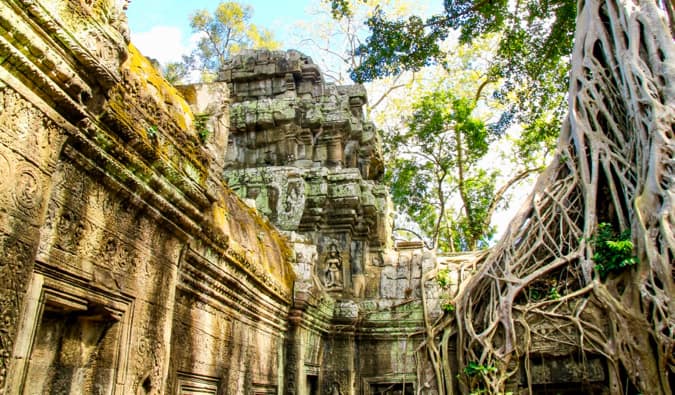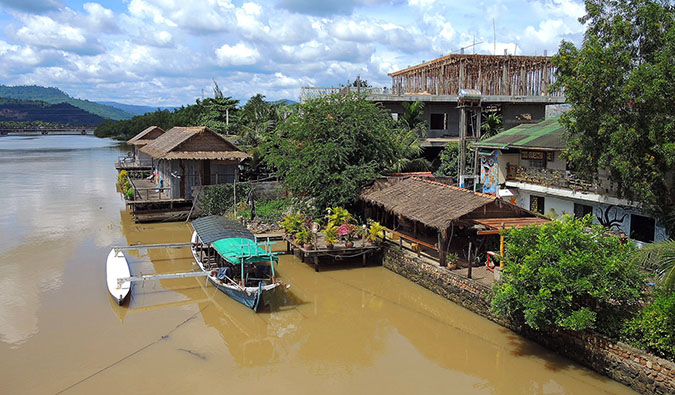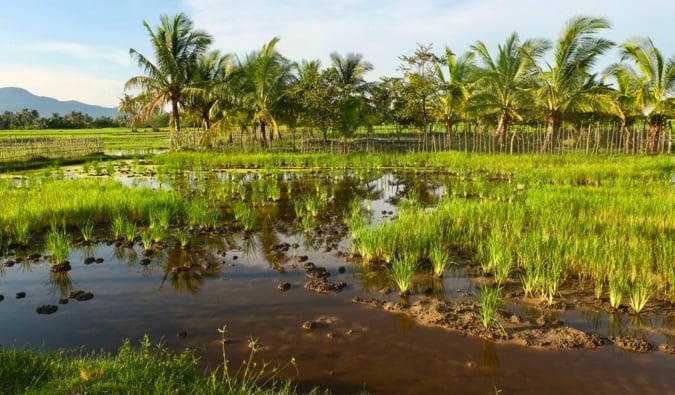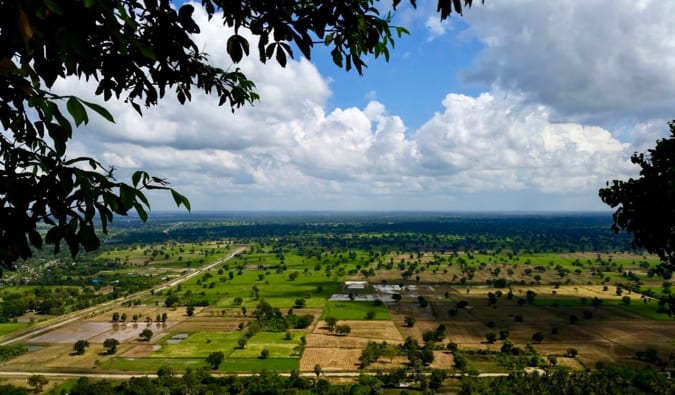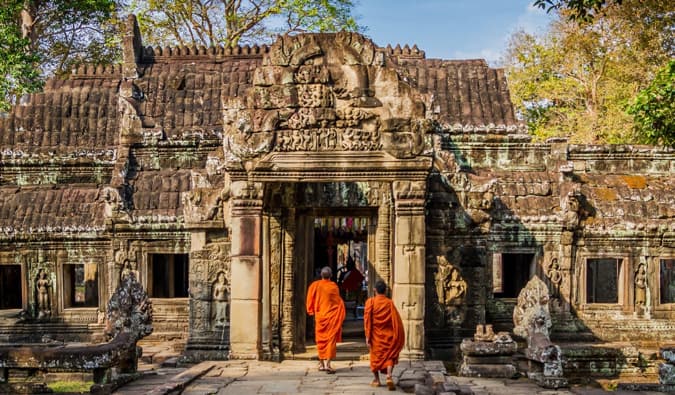
Posted: 9/3/2019 | September 3rd, 2019
I used to live in Taiwan for a few months as an English teacher. I loved the time there and have always felt the country was really under appreciated. So, in this is a guest post by Carrie Kellenberger from My Several Worlds and an expat living in Taiwan for ten years, she lists out all the amazing things you should see and do there.
Every country in Asia is beautiful, but Taiwan is special for many reasons. The people are warm and hospitable. In March 2019, Taiwan was listed as the happiest place in East Asia.
While it might be a small island, you would be amazed at the never-ending variety of sights and fun things to do here. With over a hundred mountain peaks above 3,000 meters, over a hundred hot springs scattered around the island, both golden and black-sand beaches, nine national parks, world-class museums, glittering skyscrapers, stunning temples, and a huge number of night markets that are second to none, Taiwan has something that everyone can enjoy.
To this day, nearly 14 years after I moved here, I still think Taiwan is one of Asia’s best-kept travel destination.
Here are some of the best ways to spend your time in Taiwan:
1. Eat, Eat Eat!
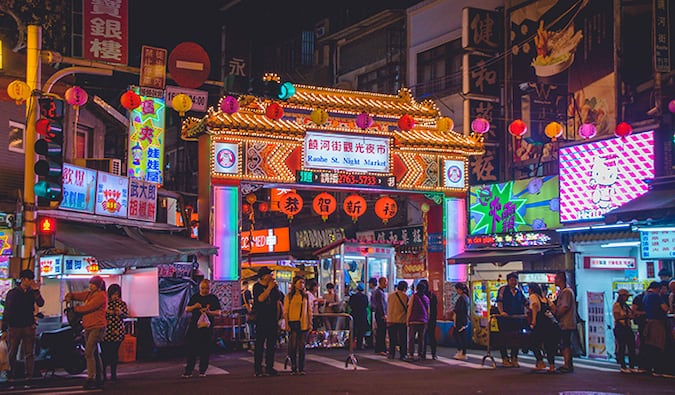
The national pastime in Taiwan is eating. Taiwanese, both adults and children, are very work and study oriented, so their lifestyles demand healthy food that is available on the go. Moreover, there is always an abundance of fruits and vegetables, so visiting a local market can be a delight when you find out how cheap it is to eat fresh food.
As a result, Taiwan has become an epicurean’s playground. The food scene is an international smorgasbord of culinary delights, for every budget and almost every diet.
Night Markets
While there are five-star international restaurants of every variety throughout the country, the night markets are where the real gastronomes go. They promise to keep your belly full while your wallet remains relatively unscathed.
There are over 30 night markets in Taipei, New Taipei, and Keelung (and over 70 night markets across Taiwan). If you’re not sure which one to choose, visit this list of night markets in Taiwan and take your pick. My personal favorites are Shilin, Keelung, and Roahe Street in Taipei.
Here are a few things you should try:
- Xiao long bao, also known as soup dumplings, a favorite staple food here. They are made out of a thin pastry folded into a type of bag that is then stuffed full with a meat-and-vegetable mixture and a tiny amount of soup, then garnished with raw ginger and soy sauce. Biting into one of these is a flavor explosion in your mouth. Plenty of street vendors at night markets offer fresh xiao long bao for around $2 USD for a basket of 10-12. There is really no reason not to try them. I’ve yet to meet a visitor to Taiwan who hasn’t loved their xiao long bao experience. I promise you will not be disappointed.
- Oyster vermicelli
- Oyster omelets
- Beef noodle soup
- Deep-fried chicken
- Tian bu la (a type of fish cake fried with coriander with a dash of pepper and spice)
- Sweet Taiwanese sausage or BBQ on a stick
- Stinky tofu
- “Coffin bread” (a tasty bread bowl shaped like a coffin)
- Pig’s blood cake (It’s made from pig’s blood, sticky rice and soy broth and tastes much better than it sounds, I promise!)
- Shaved ice
- Zhen zhu nai cha (Taiwanese bubble tea)
- Taiwan Beer (it’s the most popular local beer)
No matter what you decide on, you’re sure to have a great meal at a low cost while experiencing Taiwanese culture at its very best. You’ll be amazed at what you can buy for dinner for just $5 USD! You’ll definitely find some things that you hate, but you’ll also find things that you’ll love. It’s all part of the experience, right?
2. Visit a Taiwanese Teahouse
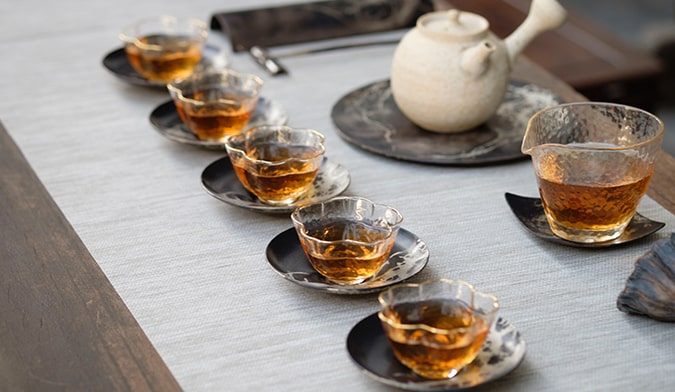
Tea culture in Taiwan is wonderful, and there are many options for tea lovers.
- Maokong Gondola – This gondola will whisk you four kilometers to a mountain peak in a glass-bottomed cable car, from which you can view the tea plantations built into the side of the mountain as you zoom up. You can catch it at the Taipei Zoo MRT station; a ride costs 120 NT ($4 USD) each way. Once you’re at the top, there are several winding paths for a pleasant mountaintop stroll and a great selection of teahouses to choose from when you’re ready to enjoy a cup of fresh mountain tea.
- Jiufen – If you’re heading out of Taipei, Jiufen is one of Taiwan’s most popular tourist destinations, owing to its appearance in the Studio Ghibli film Spirited Away. This seaside mountain village offers some terrific shopping opportunities, as well as all the different kinds of foods you see in the movie. It’s one of my favorite places, because it is also home to some beautiful teahouses in the most glorious setting. Imagine sitting at the top of a mountain, looking out over the ocean in the comfort of a traditional tea house. It is truly a magical experience, especially if you can get there for sunset. Go on a weekday to avoid the large weekend crowds.
- Jwu Jiu Teahouse – If you make it as far south as Chiayi, be sure to find Jwu Jiu Teahouse, a hidden gem that is like taking a step back into the past. Jwu Jiu is a traditional wooden teahouse set above enormous stone ponds filled with hundreds of giant, brightly colored koi. Feed the fish while sipping on your tea, and enjoy some traditional dim sum in the loveliest setting you’ve ever seen. The grounds belong to a local family, and the teahouse uses a well that is over a century old, in which the water still runs deep and pure. The owner has kept most of the original structures and bricks, plus a hundred-year-old Osmanthus tree, which is associated with many traditions in China and Taiwan. If you’re a history buff, you’ll enjoy the teahouse’s long history, displayed with pride and obvious care.
3. Check out the Northern Coastline
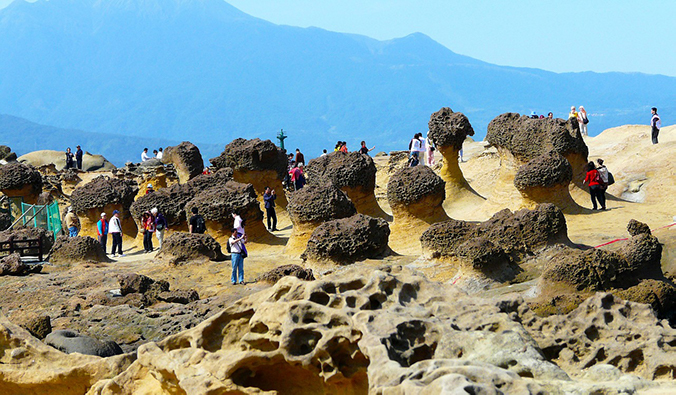
Head to the coast for some incredible lunar-like landscapes at Yehliu Geopark. There are some unique, otherworldly rock formations, including one that looks like Queen Elizabeth (though it took over 4,000 years to form) that are a popular tourist attraction. Try to get there early to beat the crowds.
4. Hit the Beaches

The beaches of Kenting on the southern tip of the island offer fun in the sun. White Sand Bay is the most popular and a great place to soak up the sun, swim, snorkel, or even go diving (just keep an eye out for jellyfish!). Other great beaches are South Bay and Little Bali Bay.
5. Soak in the Hot Springs
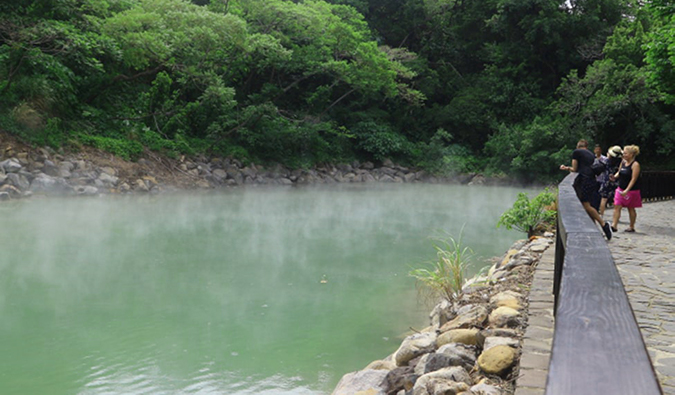
Taipei has its very own active volcano in its backyard, and because of the volcanic activity in the area, Beitou Hot Springs enjoys a steady stream of visitors and locals who love to bathe in its healthy waters. Prices start around 40 NT ($1.30 USD) per person for a soak in the hot springs, making it a very affordable choice for anyone looking for some R&R.
6. Go Island Hopping
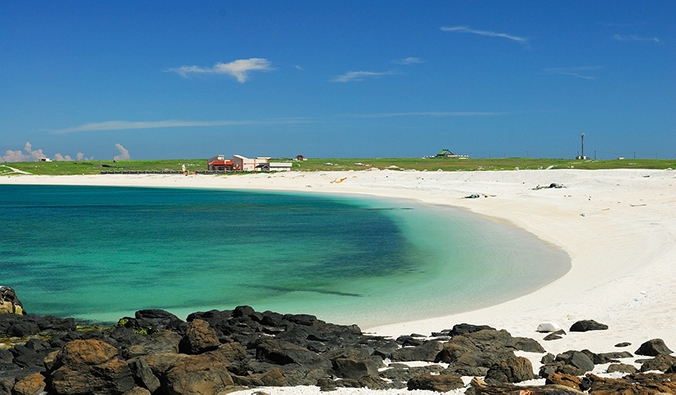
The beautiful islands of Penghu just off Taiwan’s western coastline will delight your sense of wanderlust and are especially well known for their golden beaches. This island archipelago has islands that are all distinct.
Boats will drop you off at one island for a few hours and then take you to the next one, so you can literally go from snorkeling to observing sea turtles to wandering through traditional aboriginal villages made out of coral in a single day.
7. See Old Taiwan
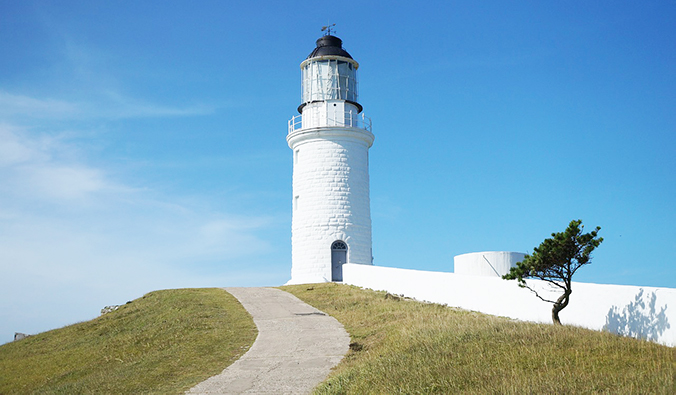
Two groups of islands that make up the Kinmen Archipelago off the west coast of Taiwan, just a couple miles from mainland China — and they are old Taiwan at its best. Here you’ll be able to see some traditional architecture, and there are also insightful museums that highlight the ongoing tensions between the People’s Republic and Taiwan.
8. Get Off the Beaten Track on Orchid Island and Green Island

Located just off the southeastern coast, these lush islands are a treat to visit. Here you’ll find hiking, swimming, diving, and amazing hot springs. You can also get further off the beaten path and have an adventure by renting a scooter to traveling around the islands yourself!
9. Explore the Green Mountains
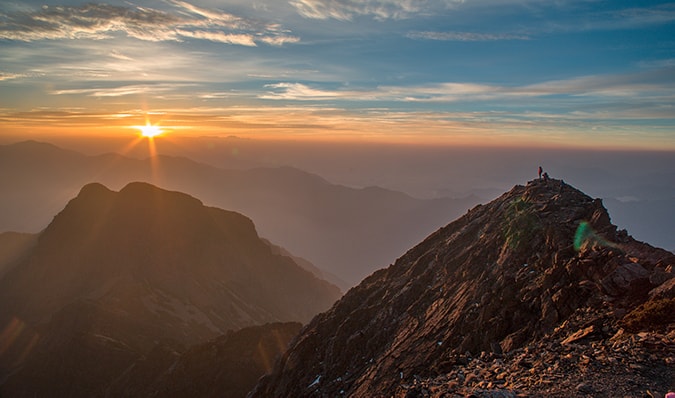
Grab a scooter and head up into the green mountains, which extend over five ranges the length of the island. If you want to stretch your legs, climb to the summit of beautiful Jade Mountain and watch the sunrise; this beautiful peak is almost 4,000 meters above sea level, making Taiwan the world’s fourth-highest island.
10. Visit Wuling Peak on Hehuan Mountain
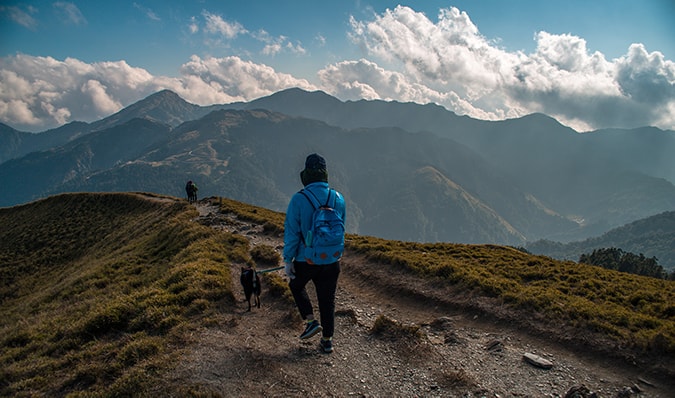
If you’re still craving some climbing and hiking, head to Wuling Peak on Hehuan Mountain, around 3,275 meters above sea level, making it another good hike for anyone looking to spend more time outdoors. But what really makes this place special is that the peak is so high, you can look down into a sea of clouds below!
11. Go Hiking in Taroko National Park
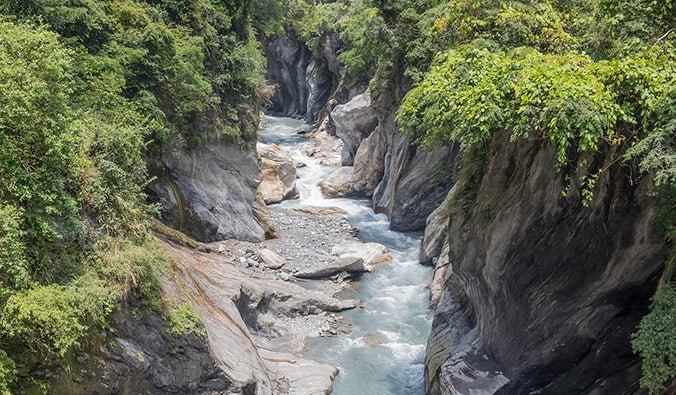
Ready for another city break? This national park offers visitors a chance to hike through mountainous terrain and gorges, and you can even stop to dip your feet in swiftly flowing mountain rivers. Covering just under 100,000 hectares, it’s one of only nine national parks in Taiwan. Admission is free.
12. Head East
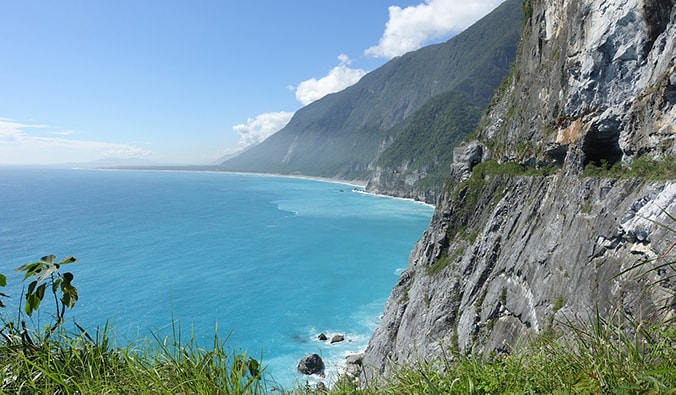
To really enjoy Taiwan’s majestic beauty, don’t forget Taiwan’s eastern coastline. The east coast highway has some of the most dramatic coastal scenery in the world, from plunging sea cliffs and splashing surf to beaches, nature reserves, and rural towns a world away from the big city.
13. Witness Some Chaos
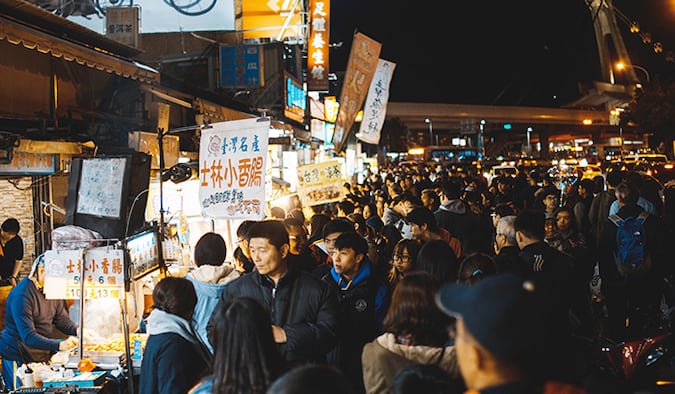
Check out the feeding frenzy of the markets in Taipei, or enjoy a stroll around cool Ximending, the gay district and Taipei’s answer to Tokyo’s Shibuya. Ximending boasts a massive outdoor plaza behind the Red House (a well-known cultural landmark) and a pedestrian shopping zone filled with the latest fashion trends, coffee shops, restaurants, and local artisans.
Give yourself bonus points for checking out all the super cool graffiti; you won’t find it on the main thoroughfares, but if you venture onto some of the smaller side streets, you’ll soon find yourself in world of brightly decorated alleys and lanes.
14. See Tianhou Temple

While you’re in Ximending, it’s worth stopping by one of the oldest temples in the city, Tianhou (also known as the Ximending Mazu Temple, after the in-house deity Mazu, goddess of the sea). Around since 1746, it’s one of three major temples in Taiwan from the Qing period. It’s located on a main thoroughfare — but it’s very easy to miss the entrance.
Stepping through the entrance to this beautiful Taoist temple filled with mythological creatures, smoky incense, lucky goldfish, and people paying respect to the gods is truly a surreal experience. You’d never know this quiet oasis is in one of the busiest areas of Taipei!
15. Explore Fo Guang Shan Monastery

If you have your own ride in Kaohsiung, I strongly encourage you to stop by Fo Guang Shan Monastery and pay homage to the monks that live there. An ultra-Zen monastery open to the public, the complex is massive and stunning, leading to the Great Path of Buddhahood, a broad pathway flanked by eight identical pagodas.
You can explore each as you walk your way up to the Big Buddha, the highest seated bronze Buddha in the world. I’ve been to many temples and monasteries in my lifetime, but this one takes the cake.
16. Visit a Taiwanese Aboriginal Village
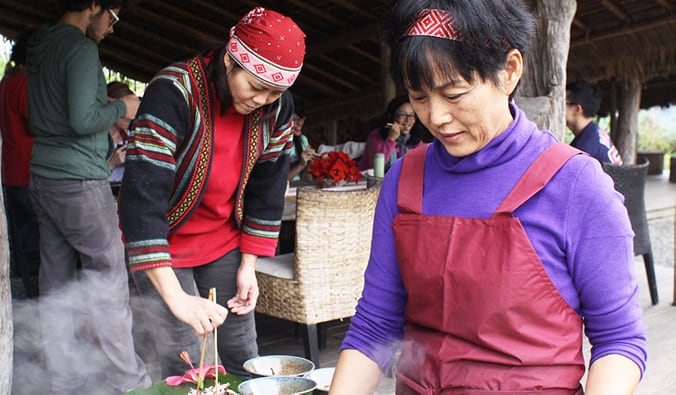
There are many knowledgeable local guides that can introduce you to the aboriginal way of life in Taiwan. The Formosa Aboriginal Culture Village near Sun Moon Lake is the most popular destination to learn more, but it’s certainly not the only one — there are lots of villages to choose from.
17. Take Part in the Pingxi Lantern Festival
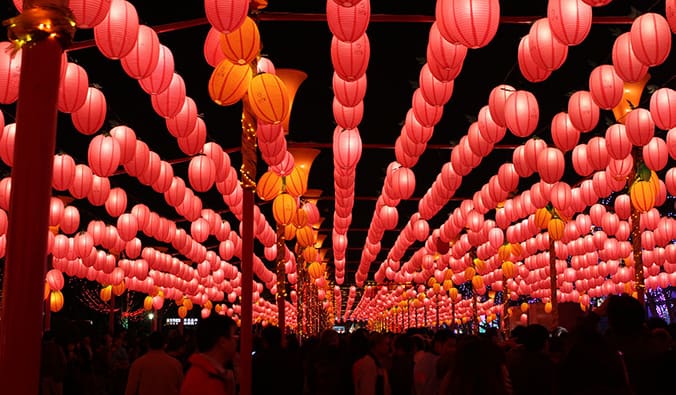
One of the coolest events in Taiwan, the Pingxi Lantern Festival involves releasing hundreds of paper lanterns into the sky. (Many newlyweds also include this meaningful tradition as a part of their wedding celebration.) If you don’t want to brave the crowds, you can easily purchase a lantern and light one on any of Taiwan’s beaches.
Taiwan is very environmentally friendly, so make sure you go with the eco-friendly paper lantern options that disintegrate, leaving no residue, and don’t cause fires. The company My Taiwan Tour also currently offers biodegradable paper lantern tours in Shifen.
There are many things about Taiwan that make it an incredible place to live; it’s easy to take some of those things for granted once you’ve been here for a while. I frequently hear that people think Taiwan is very Westernized, and while I agree that it is to some extent, there are still plenty of authentic Taiwanese experiences to be had!
Taiwan is and continues to be an unexpected travel destination that continues to delight visitors to this day. There is no place like it!
Canadian expat Carrie Kellenberger has been living in Asia since 2003. She moved to Taiwan in 2006 and became a permanent resident in 2012. She loves entertaining guests and travelers to Taiwan. You can read about her adventures and life there at her blog, My Several Worlds.
Book Your Trip to Taiwan: Logistical Tips and Tricks
Book Your Flight
Find a cheap flight by using Skyscanner or Momondo. They are my two favorite search engines because they search websites and airlines around the globe so you always know no stone is left unturned.
Book Your Accommodation
You can book your hostel with Hostelworld. If you want to stay elsewhere, use Booking.com as they consistently return the cheapest rates for guesthouses and cheap hotels. I use them all the time. My favorite places to stay in Taipei are:
- Formosa 101 – This hostel is located right near the Taipei Tower and the Tonghua Night Market. They offer free breakfast and have a laid back lounge for relaxing.
- Meander Taipei – The staff here is really helpful and the beds are comfy. They have free breakfast as well as other daily activities available.
Don’t Forget Travel Insurance
Travel insurance will protect you against illness, injury, theft, and cancellations. It’s comprehensive protection in case anything goes wrong. I never go on a trip without it as I’ve had to use it many times in the past. I’ve been using World Nomads for ten years. My favorite companies that offer the best service and value are:
- World Nomads (for everyone below 70)
- Insure My Trip (for those over 70)
Looking for the best companies to save money with?
Check out my resource page for the best companies to use when you travel! I list all the ones I use to save money when I travel – and I think will help you too!
Photo credits: 9 – David Hsu, 15 – Yi Chen, 16 – Huicheng1967
The post 17 Things to See and Do in Taiwan appeared first on Nomadic Matt's Travel Site.
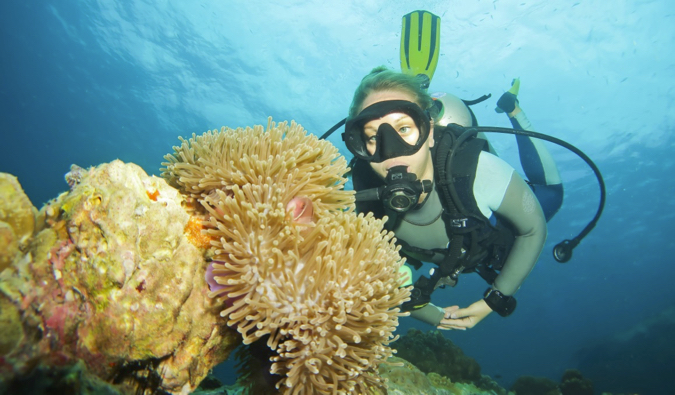 Updated: 8/22/2019 | August 22nd, 2019
Updated: 8/22/2019 | August 22nd, 2019
